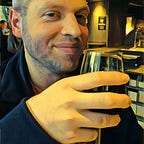Musings from Montenegro
Journal and personal photographs, Day 5
Thursday, March 22nd, 2018 — Kotor
Wind and rain were the story of today. The bay was unsettled, even angry, the color a choleric seasick teal green. As we had about 2 hours to drive to Ulcinj, we woke earlier than usual to hit the road a bit after 9:00. Much of the route was similar to Tuesday when we passed by Petrovac before changing course to reach the lake.
This route continued south, taking as a stone’s throw away from the border with Albania. Italy is not so very far across this sea at this southern point; in fact, at Bar, it’s possible to take passage on a ferry, presumably to the town of Bari on the other side.
There was a lot of clay further south along the coast. I saw much more rust-colored earth that seemed to be everywhere. Though Montenegro is not a rich country, it seemed poorer near Ulcinj. D. said about 95% of the population is Albanian. I don’t have any statistics to back this assertion up. There were a few mosques in town, indicative of the Muslim population.
We visited the inside of one, the Sailor’s Mosque, built just by the beach — I should say rebuilt in 2012 with the help of Turkish funding. It had been destroyed in 1931 by Serbian forces and no one knew its original founding.
The Old Town was a seaside fortress that was equal parts nouveau riches and under construction. Every restaurant looked closed. The wind was strong at that high point, and also quite cold, maybe 8 degrees Celsius. Many of the stones were wet and slippery.
I’d be curious to see the town in-season, many of the places of business seemed to be closed, out of business, or undergoing renovations. On the way out of town we stopped to eat at Restoran Alfa, a local joint clouded with smoke and electro dance music. I had beer and gulaš served with rice and mashed potatoes. Scrumptious. And the price was unbeatable: for less 11€ we had 2 drinks, 2 plates, and 2 Turkish coffees. That’s a winner.
On the way back we stopped by Stari Bar, where a dilapidated old fortress was the main highlight. There were crumbling walls and piles of stones in rubble. The earthquake in ’79 destroyed the aqueduct, cutting off the water supply. They built the new city of Bar closer to the old port. After the aqueduct was repaired, some people moved back but the population today rests around 1,800 people. With regards to the fortress, it was fascinating from an archeological point of view. We were there by ourselves and had the run of the place. It was easy to let the imagination wander and wonder over the footsteps of previous Balkan generations, history buried beneath the rubble.
